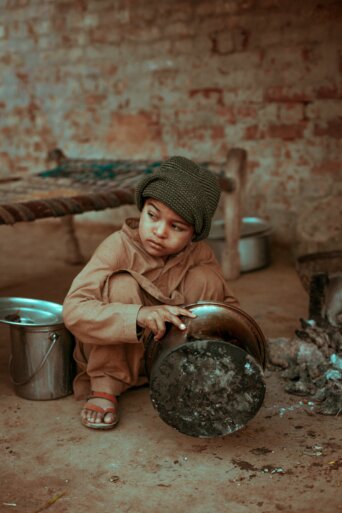- About
- Topics
- Story
- In-Depth
- Picks
- Opinion
- News
- Donate
- Signup for our newsletterOur Editors' Best Picks.Send
Read, Debate: Engage.
| topic: | Food Security |
|---|---|
| located: | India, China |
| editor: | Hanan Zaffar |
With a current population of about 1.4 billion, India is on track to surpass China next year to as the world's largest country in terms of population. The UN’s latest estimate predicts the Indian population to overtake that of China in 2023, which according to the earlier estimates was supposed to happen only in 2027.
While the growing population is already one of the many problems faced by the world in general, it becomes even more complicated for India due to its state of affairs considering its lack of success in catering to the nutritional, medical and educational needs of its population, despite the gap it has filled in these sectors in the last seven decades since its independence. The current scenario makes India’s journey full of challenges as it is set to become the world's most populous country next year.
In terms of the number of people living in poverty, India surpassed Nigeria at the start of this year. According to the World Poverty Clock, India is home to more than 83 million poor people, who live on less than $2 per day. With the country still battling to combat poverty among its current populace, a growing population in such an environment will increase the economic hardship. The COVID-19 pandemic has only exacerbated this epidemic, leading 230 million Indians to fall into poverty as a result.
Moreover, poverty engenders a range of other issues for this section of the population. In a setup where combating poverty is not successful, a lack of proper nutrition, access to better healthcare and education will linger. According to the Indian government’s most recent National Family Health survey for 2019-20, India, which has an infant mortality rate of 3.5 percent, still has about 11 percent non-institutionalised births. The same data states that only 11.3 percent of children aged 6 to 23 in the country have an adequate diet. Simultaneously, 35.5 percent of children under the age of five are stunted and 32.1 percent are underweight. Body Mass Index (BMI) is below normal for 18.7 percent of women and 16.2 percent of men in the country.
While India has a literacy rate of 71.5 for women and 84.4 for men, only 41 percent of women and 50.2 percent of men in India have had 10 or more years of schooling. Almost 28 percent of Indian women have never attended school. This is despite education being a fundamental right in the Indian constitution!
With a large population already battling for basic necessities, a further increase in population numbers would result in an additional burden on available services. The data makes it clear why India would face significant challenges as its population continues to grow rapidly. One must also consider the recent pandemic, which has made things more difficult, as well as the fact that when the data is separated by urban and rural populations, it becomes more concerning as it depicts the disparity between the two and the bleak picture of rural life in India.
Photo by Muhammad Muzamil

